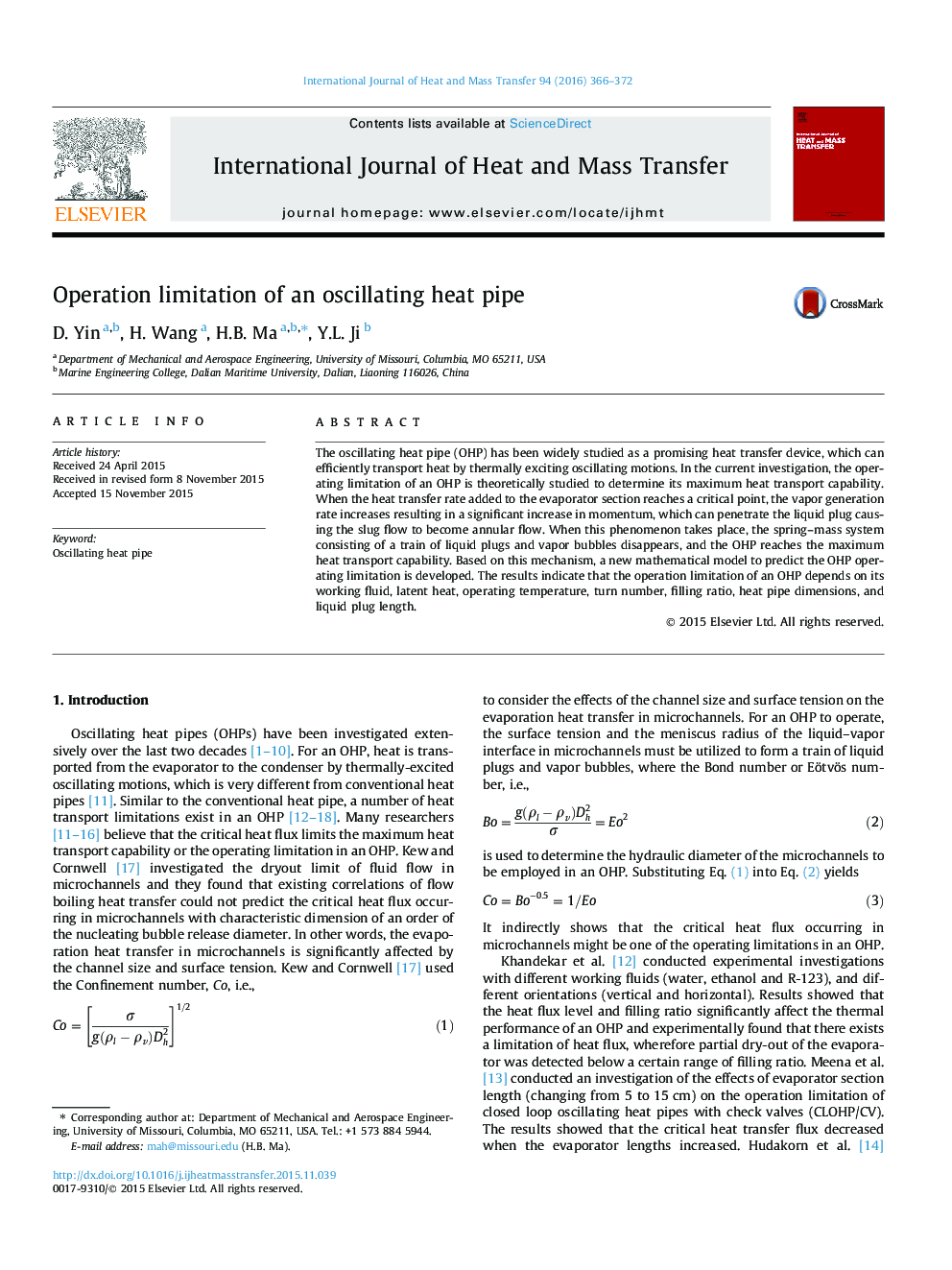| Article ID | Journal | Published Year | Pages | File Type |
|---|---|---|---|---|
| 7055987 | International Journal of Heat and Mass Transfer | 2016 | 7 Pages |
Abstract
The oscillating heat pipe (OHP) has been widely studied as a promising heat transfer device, which can efficiently transport heat by thermally exciting oscillating motions. In the current investigation, the operating limitation of an OHP is theoretically studied to determine its maximum heat transport capability. When the heat transfer rate added to the evaporator section reaches a critical point, the vapor generation rate increases resulting in a significant increase in momentum, which can penetrate the liquid plug causing the slug flow to become annular flow. When this phenomenon takes place, the spring-mass system consisting of a train of liquid plugs and vapor bubbles disappears, and the OHP reaches the maximum heat transport capability. Based on this mechanism, a new mathematical model to predict the OHP operating limitation is developed. The results indicate that the operation limitation of an OHP depends on its working fluid, latent heat, operating temperature, turn number, filling ratio, heat pipe dimensions, and liquid plug length.
Related Topics
Physical Sciences and Engineering
Chemical Engineering
Fluid Flow and Transfer Processes
Authors
D. Yin, H. Wang, H.B. Ma, Y.L. Ji,
